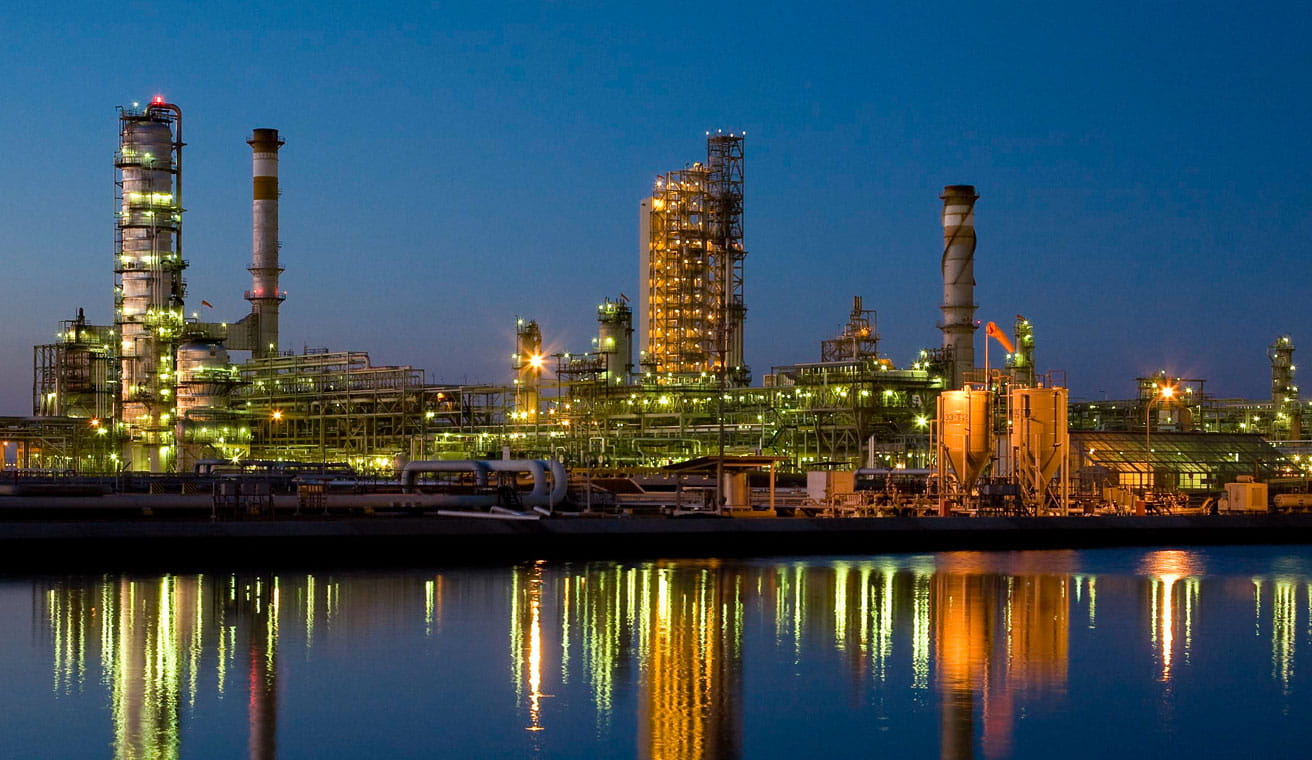Inside Yanbu Refinery’s digital transformation journey
How Aramco’s 40-year-old refinery achieved the World Economic Forum’s prestigious ‘Global Lighthouse’ status.

- In 2018, Yanbu Refinery kicked off a strategic 5-year digital transformation plan
- By harnessing Fourth Industrial Revolution (4IR) technology, the refinery improved its production capacity, increased profitability, and reduced emissions
- Yanbu Refinery is Aramco’s first Downstream facility to be granted "Global Lighthouse" network status
Aramco’s Yanbu Refinery is an integral part of our refining, chemicals, and marketing portfolio, one responsible for providing critical feedstock and essential fuels to meet the Kingdom’s energy needs. Commissioned in 1983 and located along Saudi Arabia’s Red Sea coast, Yanbu Refinery is equipped to convert 230,000 barrels of crude per day with daily fuel production enough to drive an average car around the world more than 3,000 times.

To maintain a competitive edge as one of the leading suppliers of fuels in the Kingdom, the 40-year-old refinery undertook a strategic Fourth Industrial Revolution (4IR) transformation, leveraging technologies such as artificial intelligence (AI), advanced analytics, and robotics.
Our consistent efforts in modernizing decades-old legacy systems and transitioning to digitally-based operations paid off, and in 2023, the facility went on to become the world’s second refinery to be awarded with World Economic Forum (WEF) Lighthouse status, which is granted to a select group of the most innovative facilities across the world.
Powered by cutting-edge technology
Yanbu Refinery is Aramco’s fourth facility to be added to the WEF’s Global Lighthouse Network, which, as of July 2024 includes 153 manufacturing facilities around the globe. With the addition of Yanbu, Aramco became the first international energy company to be represented by more than two facilities.
Companies looking to qualify for Lighthouse recognition must demonstrate leadership in implementing 4IR technologies at scale while making financial, operational and, sustainability improvements.
Like Aramco’s previous WEF Global Lighthouse designees — the Uthmaniyah Gas Plant, Abqaiq Oil Processing and Crude Stabilization facility, and the Khurais oil complex — Yanbu Refinery’s journey to achieving Global Lighthouse status shows our sustained focus on the deployment of state-of-the-art 4IR technologies, which, in turn, contributes to enhancing the Company’s operations and furthering our sustainability ambitions.
“At Yanbu Refinery, we have successfully harnessed 4IR use cases to improve profits, increase production, and expand processing capacity, while simultaneously reducing energy consumption, waste generation, and emissions. Such achievements reinforce our position as a technology leader in our industry and highlight the benefits for our industry of adopting cutting-edge solutions.”
Ibrahim Al-Bauinain
Executive Vice President of Global Manufacturing, Aramco
The roadmap to digitalization
Yanbu Refinery’s digital transformation did not happen overnight but was the result of a focused vision, meticulous planning, and then, the execution of a strategic five-year digital transformation plan spanning 2018 to 2023. The refinery’s plan was closely aligned with Aramco’s company-wide Digital Transformation Program, which enables us to deploy the latest breakthroughs in technology so we can deliver tomorrow’s energy more safely, efficiently, and sustainably.
Upgrading the four-decade-old refinery by utilizing advanced technologies yielded substantial improvements in the facility’s operational efficiency. Through its digital transformation, Yanbu Refinery improved its production capacity by 18% and increased profitability by 35%.
One of these upgrades included the digital integration of new technologies with legacy systems, which called for a complete overhaul of the refinery’s Industrial Internet of Things (IIoT) systems. IIoT sensors are used to gather real-time data from a facility, which can be combined with digital analytics and self-diagnostic tools to automatically monitor and enhance asset performance.

Harnessing the power of AI
Each day, the refinery churns out massive amounts of data that must be compiled and analyzed to optimize production. Sensors were deployed to collect data from thousands of pieces of equipment, which was then analyzed using an AI-powered application in order to enhance production efficiency.
The refinery also deployed an advanced AI-driven application designed to reduce the fuel gas consumption of the refinery’s processing units. This technology not only increased the efficiency of this process but also helped reduce the facility’s Scope 1 and Scope 2 greenhouse gas (GHG) emissions by 14%, directly contributing toward the Company’s progress towards attaining our GHG emission reduction ambitions.

Embracing new technologies
Transforming legacy systems involves more than just technological upgrades, it requires a cultural shift within the organization to embrace new technologies and methodologies. Foundational training played a pivotal role in the project’s success, ensuring that the refinery workers were well-versed in 4IR concepts. The training also paved the way for upskilling and reskilling of the current staff, allowing them to contribute effectively to the project’s roadmap.
To help the refinery’s workers embrace the use of new technology, the training team used a virtual reality (VR)-based training hub, which offers certified courses that can be accessed remotely by employees at any time. VR training has proven very useful to learners, giving them the ability to interact with 3D models that simulate real work scenarios and challenges. This not only reduced the training turnaround time, but has helped improve the safety and process skills of the workers.
In addition to the use of AI and VR, the transformation teams at Yanbu Refinery bridged the gap between legacy and innovation by scaling up the utilization of drones and robotics. For example, the facility began using caged drones, a special class of drones for inspection of confined spaces like oil storage tanks and drums, eliminating the need for manned entry and scaffolding. This greatly reduced the facility’s downtime and improved workplace safety.
Continuing to innovate
Digital transformation lies at the heart of Aramco’s success as we continue using 4IR cutting-edge technologies to optimize every area of our operations — evidenced by more Aramco facilities continuing to achieve Global Lighthouse status by digitalizing their operations.
Yanbu Refinery is our first Downstream facility to achieve the Lighthouse recognition, which is not only a remarkable milestone for us but also illuminates the path for other Downstream units worldwide, showcasing how embracing technology and innovation can lead to exceptional performance.
More from Elements
The material in this article is intended to be for general informational purposes only, and readers should not place undue reliance on the statements or opinions therein. Any information provided speaks only as of the date this content was published and Saudi Aramco undertakes no obligation to correct, update, or revise any statements or opinions made in or implied by this article.






